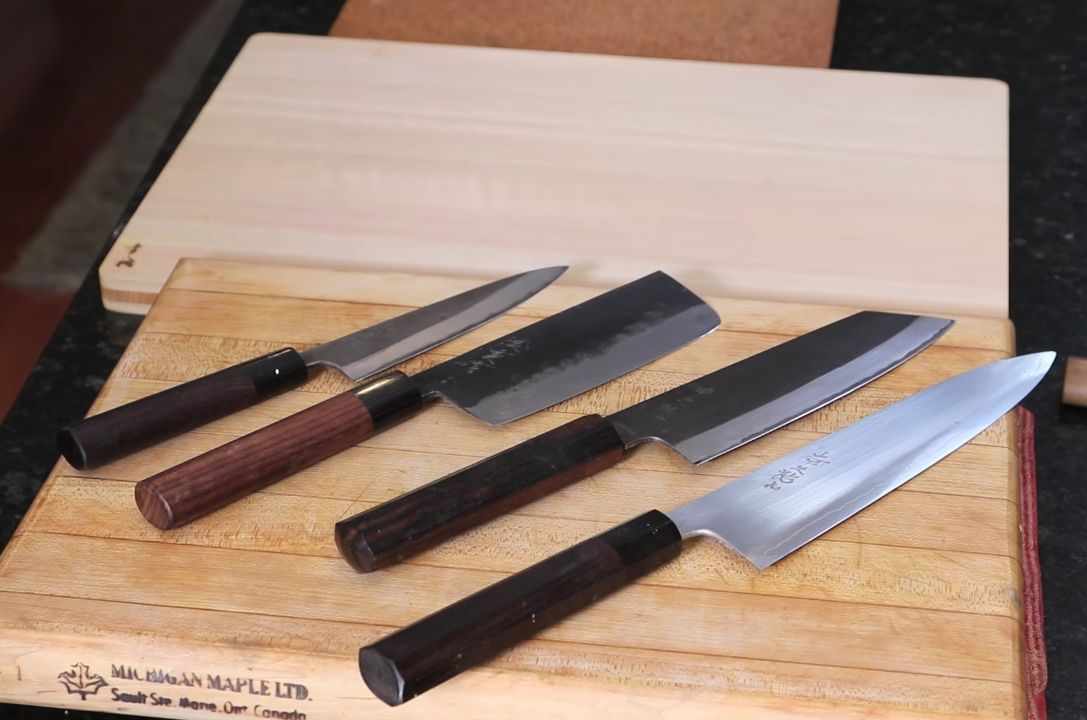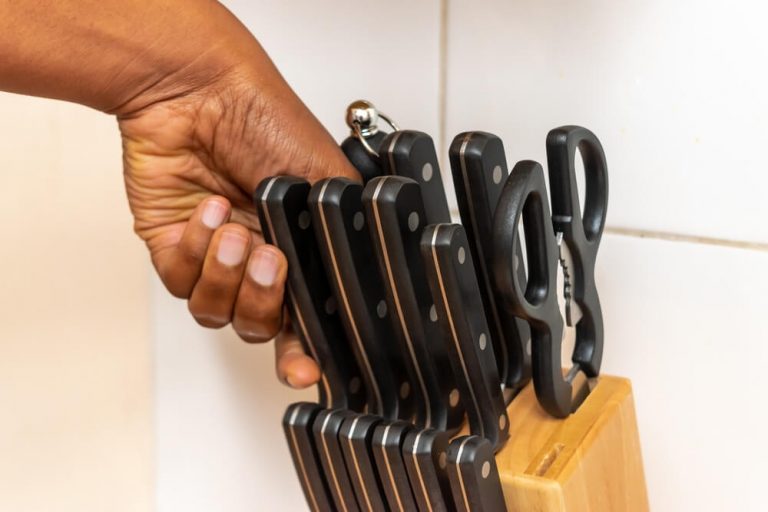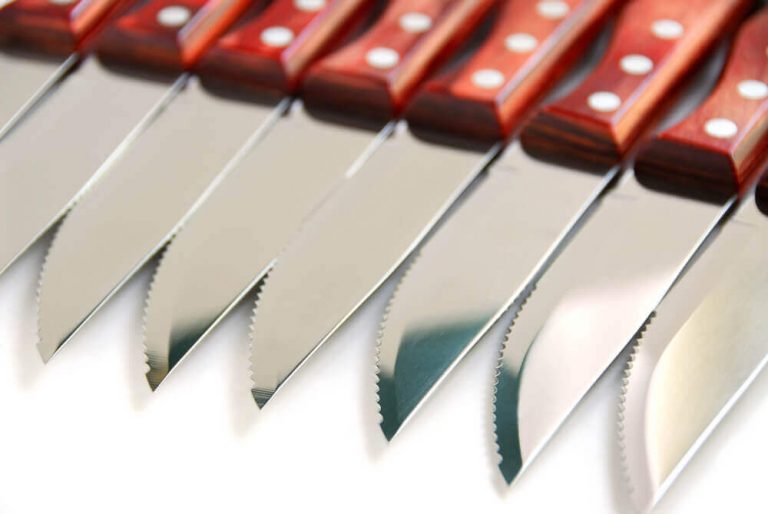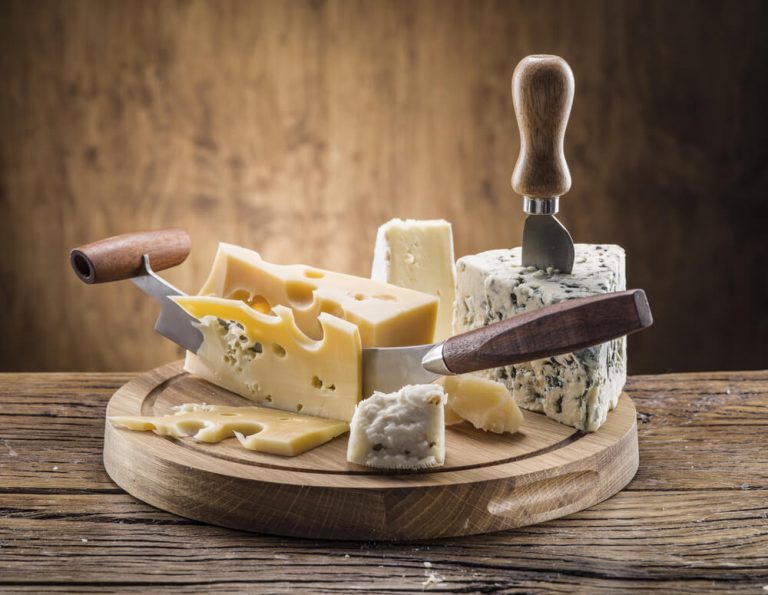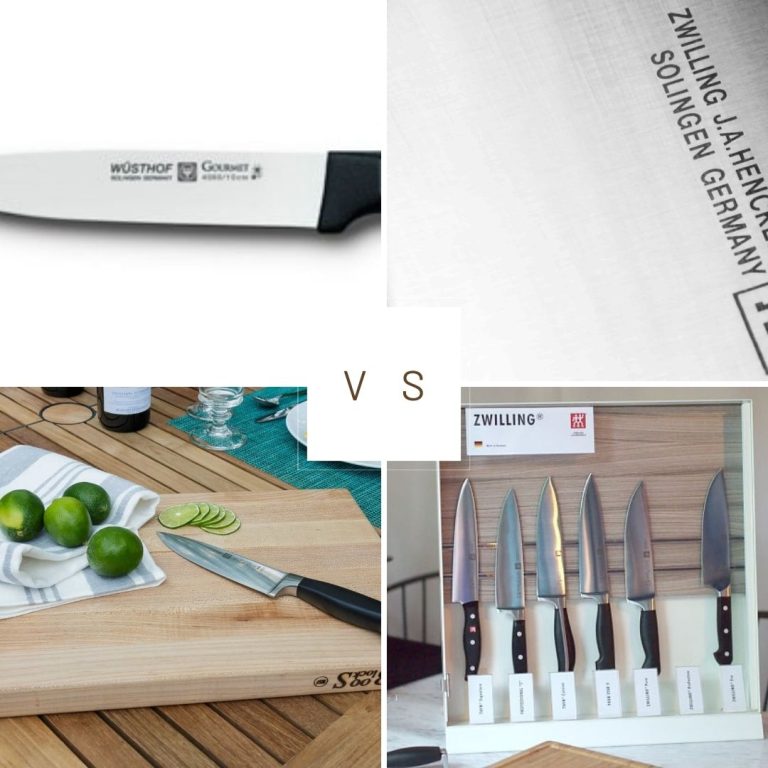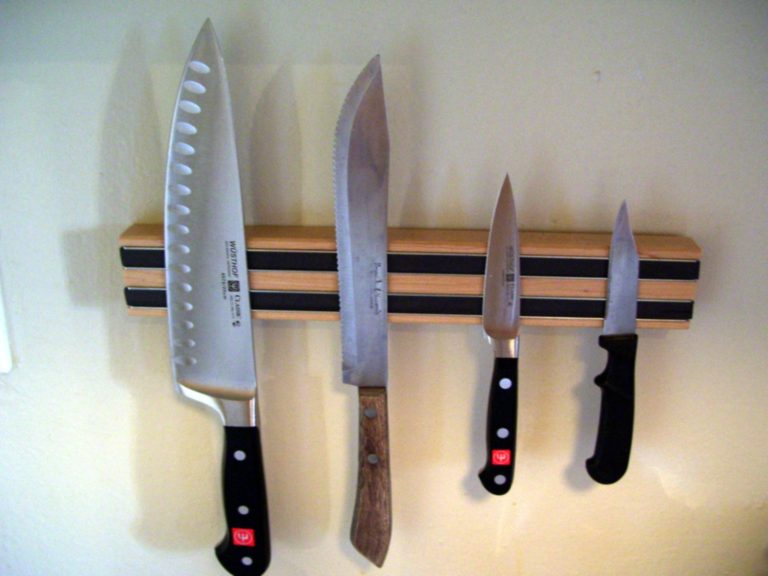When talking about knife care, people always think about cleaning and maintenance. But do you know how to store Japanese knives? Proper storage of your Japanese knife is just as important as cleaning and maintenance. Even when it comes to the precise cutting performance of the knife. You just need to put in a little effort to get big rewards. Investing in a good quality Japanese knife is not enough if you are not investing the same level of importance in proper storage. Suitable storage will keep the blade safe and secure when you are not using it. Careless storage can blunt and damage the sharp edge of a Japanese knife and cause the knife to rust. I know, no one wants this to happen to their fine looking knife. So you should not be ignorant when it comes to their safekeeping. Knife blocks, knife racks, or a knife drawer are always best for storing Japanese knives. The type of product you choose needs to be specifically designed for that particular knife. So, storage will be especially required for Japanese knives. There are many incredible storage options that you can think of to store your knives, decorate your kitchen, and display your fantastic knife collection. Let’s discuss about knife care and the storage options we have:
The best way to store Japanese knives:
There are plenty of knife storage options for your Japanese knives. High style to a variety of price options but you have to choose according to your budget, kitchen space, and what you think is best for your Japanese knife. You may wonder why proper storage is getting so much attention. Because it is the main solution to your every problem. Investing in the right storage method can maintain the quality and longevity of your Japanese knives. Also, proper storage can ensure safety and organize your kitchen. Japanese knives are not just functional tools, they are works of art. So, Proper storage will preserve their aesthetics. Now that we know why proper storage is important, it’s time to find out what the best Japanese knife storage options are.
1. Knife blocks

Knife blocks are a popular choice for storing and organizing knives. These blocks usually have individual slots or compartments to hold each knife securely. They are made of different materials like acrylic, wood, or bamboo. Knife blocks not only protect blades but also keep knives within easy reach on your kitchen countertop. It is also a safe option for you to avoid any accidents. Blocks come in different shapes and sizes. Choose the one that complements your kitchen design and space. Also, it maintains your kitchen anesthetic. Make sure your knives are clean and dry before they are stored in the block. Many brands produce blocks specifically for their knives but many ‘universal’ blocks are also available. There are a few things to consider when buying your knife block. Check if there is a way to clean the blocks, sometimes the slots can be dirty. And a dirty slot can damage the blade and cause rust. Check that the block will fit the size of the knives you want to install or not. Some blocks don’t fit knives of a certain length or width.
2. Magnetic knife rack

While there are a plethora of knife storage options, the best tool ultimately invented is the magnetic rack. Not only does it allow you to store knives safely, but it also saves space, showing off your knife collection simply and elegantly. These strips are usually placed on a wall or inside a cabinet. It has strong magnets that hold the knives securely in place. As blades are readily available for you to reach and grab at a glance a knife rack will be much easier and efficient for you to use. Those days are gone when you have to pull every single knife out of the drawer to find the one you need. They are also an ideal choice for maintenance. They are easy to clean and the rack creates minimal contact with the cutting edge of the knife. You must invest in a knife rack with strong magnets and quality wood. Cheap magnetic racks are widely available but may not be that useful as they are made of cheap material. The price of the rack Will be higher if the quality of the magnets and the cut of wood are higher.
3. Knife drawer

Knife drawers are a great option if you have the space. Knife drawers are a sleek, discrete, and hidden location to keep your knives. If you have more than one knife, a suitable slotted knife drawer will give each knife its slot and prevent bumping. Most knife drawers can hold seven or more knives. For a home kitchen, which is more than enough space. If you have small children at home, you must choose a knife drawer. Invest in the extra protection provided by Saya for your Japanese knives, when using a knife drawer. Sayas are wooden sheaths that protect a knife blade. So, it means you can store your knife safely anywhere without worrying about damaging the cutting edge. Especially in the knife drawer. Overall, if you have the space in your kitchen, a knife drawer provides an excellent place to store your Japanese knives. But if you’re short on space, maybe a knife drawer isn’t for you.
4. Kitchen knife display Stands

Do you want to proudly display your favorite Japanese knives on your countertop for all to see? Then you probably need a kitchen knife display stand. Although they are less practical than a block a knife display stand is a must have for a knife collector to store knives. you can display your three favorites or maybe more according to your display stand.
5. Chef knife rolls

Maybe you work professionally in the kitchen, or you like to bring your knives with you when you travel, in which case a dedicated knife roll is your best friend. Also, not everyone is able to fit a rack or block on their worktop, perhaps there just isn’t enough space. Knife roll is for them too. Knife rolls have specially designed pockets to keep your knives safe and secure. Even for your home kitchen, you can store all your Japanese knives in a knife roll. One thing I recommend is to use a blade guard to prevent any damage to your knife roll. It will be a extra protection if you have kids in the house or anyone whom you don’t trust around your knives.
How to take care of a Japanese knife?
Basic care is the first thing that should come to your mind whenever it comes to knife care or proper knife storage. After every cooking session, proper daily care for your Japanese knife is essential. Here’s how to keep your knife in It’s best condition:

1. Cleaning after use:
Cleaning after use is the first thing you should think about when it comes to knife care. You can think of it as preparation for storing your knife too. So, wash your knife immediately after use. You can use warm water and mild soap. You do not need harsh detergents at all. Also, harsh detergents can damage your knife. So, always avoid harsh detergents.
2. Drying properly:
After cleaning your knife with water, make sure you dry the knife immediately with a clean, dry cloth to prevent rust. You have to do it safely. Do not cut your hand while drying the knife.
3. Only washing with hand:
Never put your knives in the dishwasher. It can damage the blade or handle. So, always wash your knife with your hands and that is enough.
Tips for Proper Knife Storage
There are a few things you should keep in mind when storing knives. This can affect the maintenance of your knife and its performance. Here are some tips for storing your knife properly :
Keep the blade dry:
completely dry your knife, Before storing. Water or any moisture can damage the knife or cause rust.
Always Handle Knife with Care:
If you are using, washing, storing, or retrieving the knife, make sure you are handling the knife with care. Most knife made of strong material. But that doesn’t mean you can treat it harshly or carelessly. Everything will lose its quality or usefulness if not properly cared for.
Sharpen your Knives regularly:
Every knife loses its sharpness over time if it’s not regularly Sharpen. Proper knife storage alone is not enough to maintain optimal sharpness. Regular sharpening is also important.
Store every knife Separately:
Putting all the knives together in the same place can damage the knife, and create breakage on the sharp edges. So, always keep knives in separate slots from each other.
Keep clean the storage area:
Keep it clean where you store your knife. For example, Knife blocks can accumulate dust, so it will be a good idea to clean the slots from time to time. Magnetic strips may require regular dusting to keep knives free of decay.
Check the knife regularly:
You should regularly check the knife for rust or any signs of damage like chips or cracks. If you notice any issues earlier it will be much easier to solve them.
Follow instructions of manufacturer:
Final tips, Always refer to the manufacturer’s instructions or guidelines for proper knife storage. They sometimes offer specific recommendations for your particular type of Japanese knife.
If you follow these tips, you can ensure that your Japanese knives are properly stored, protected, and ready for your use whenever you need them.
Now that we have explored knife storage tips, let’s move on to what not to do with your knives to ensure the longevity and functionality of your Japanese knives.
What not to do:
There are some common mistakes that a lot of people make with their knives. If you want to keep your knife sharp and of good quality for a long time, you must avoid this mistake. Let’s have a look at that:
Placing your knives on a draining board:
Never leave placing your knives on a draining board. Leaving knives on the draining board is a real danger to knives. As there are other cooking tools, the blade can bump with other ingredients and risk rusting if left in standing water.
Using metal knife racks:
Metal racks are not the best for knife edges. they can damage or destroy the sharpness and quality of the Japanese knife.
Putting them in a drawer without a guard:
Only a knife guard can guarantee the safety of your blade no matter where you store it. Especially if you keep them in a drawer. Without a knife guard, anything can happen to your knife. As we all know how expensive Japanese knives are, do you think about taking the risk?
Conclusion:
At the end of the day, no matter what you choose, storing knives depends on two things, firstly keeping them sturdy and secondly keeping them safe. If your knife storage method cannot do those two things then you are choosing the wrong method. Knife storage can be as fancy as you want, but it needs to be practical no matter what. Because if it’s not practical it will be useless. Remember, the sharp edges should never touch the storage piece whenever you insert or remove the knife. you should never store a knife resting on that pointed edge. Ask yourself what’s important when stowing your knives: looks, portability, kitchen aesthetics, or something else. And then choose the suitable storage methods for your knife. Proper storage and maintenance will help prolong their life, maintain their sharpness, and keep them in great condition for years. In this article, we explore the importance of proper knife storage and discuss various storage options. Also, how to care for Japanese knives is explored. Overall everything you need to know about Japanese knife storage has been explained in detail. We hope this will help you maintain the quality, sharpness, and longevity of your cherished Japanese knives.

